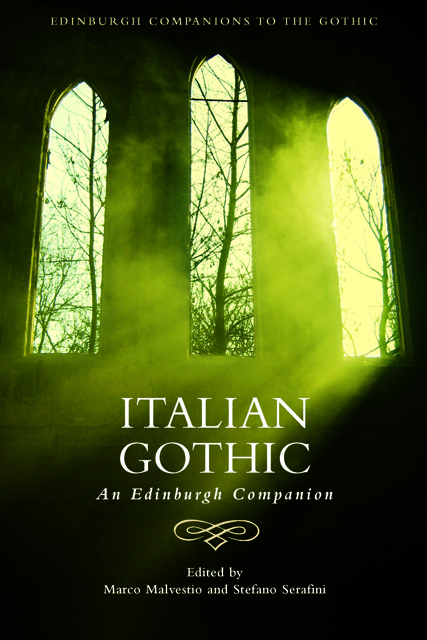7 - Gothic Poetry
Published online by Cambridge University Press: 20 October 2023
Summary
The thorny task of composing a ‘prehistory’ of the Italian Gothic drives us back to the late eighteenth century and to a cluster of authors who, although extremely popular during their time, have been generally classified as minor by contemporary compendia of Italian literature. Their poems are characterised by constellations of words semantically related to death, which many Gothic scholars seem to identify as one of the foremost terrors at the heart of their cultural field of enquiry (Davison 2). Deathly motifs emerge from words describing the imagery of the night, with its darkness and melancholic states; the imagery of tombs and graves, strictly linked to macabre portrayals of corpses in decay; and finally, all images related to incorporeal bodies, such as fantasmi [ghosts], larve and ombre [shadows], and pertaining to the realm of visions and dreamlike experiences.
However, all the representations of death exposed here are not to be considered ‘Gothic’ just because they pivot around the horrific image of death. Rather, they are all characterised by specific traits that make them ‘Gothic’, namely widespread exaggeration and abjection. As far as exaggeration is concerned, Gothic writings rely on an over-abundance of imaginative frenzy, against conventional eighteenth-century needs of simplicity, which results in a trespass of reason into visionary outcomes (Botting 2). In this respect, sepulchral poems embody a trend towards a new aesthetics, which is no longer based on reality and exemplarity, as classicism would prescribe, but rather on the spontaneity of feelings and emotions. In this way, sepulchral poems exemplify propensity for magnificence and grandeur, tending to the idea of the sublime (Botting 2). The concept of abjection is applied to poetical representations of death and the new aesthetics is the means through which such abjection is exemplified. Indeed, sepulchral texts abound in depictions of corpses where the decay of the human body is strongly represented as something to be parted from, a waste to be rejected, yet carrying a certain degree of fascination (Kristeva 3). Therefore, in order to shed light on the Gothic filigree that crosses Italian late eighteenth-century poems, one needs to key on all those representations of death where exaggeration and abjection play a role.
- Type
- Chapter
- Information
- Italian GothicAn Edinburgh Companion, pp. 107 - 122Publisher: Edinburgh University PressPrint publication year: 2023



